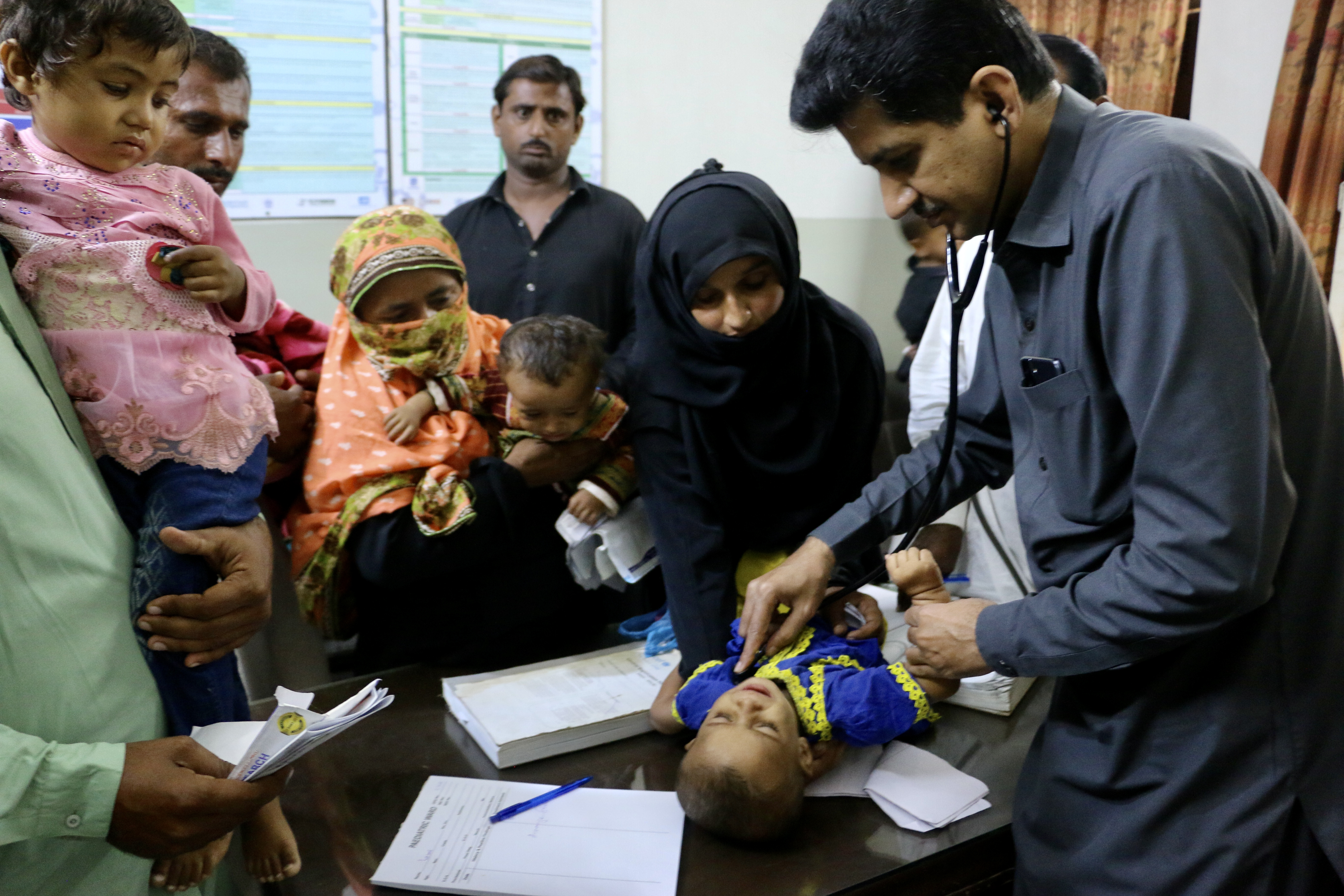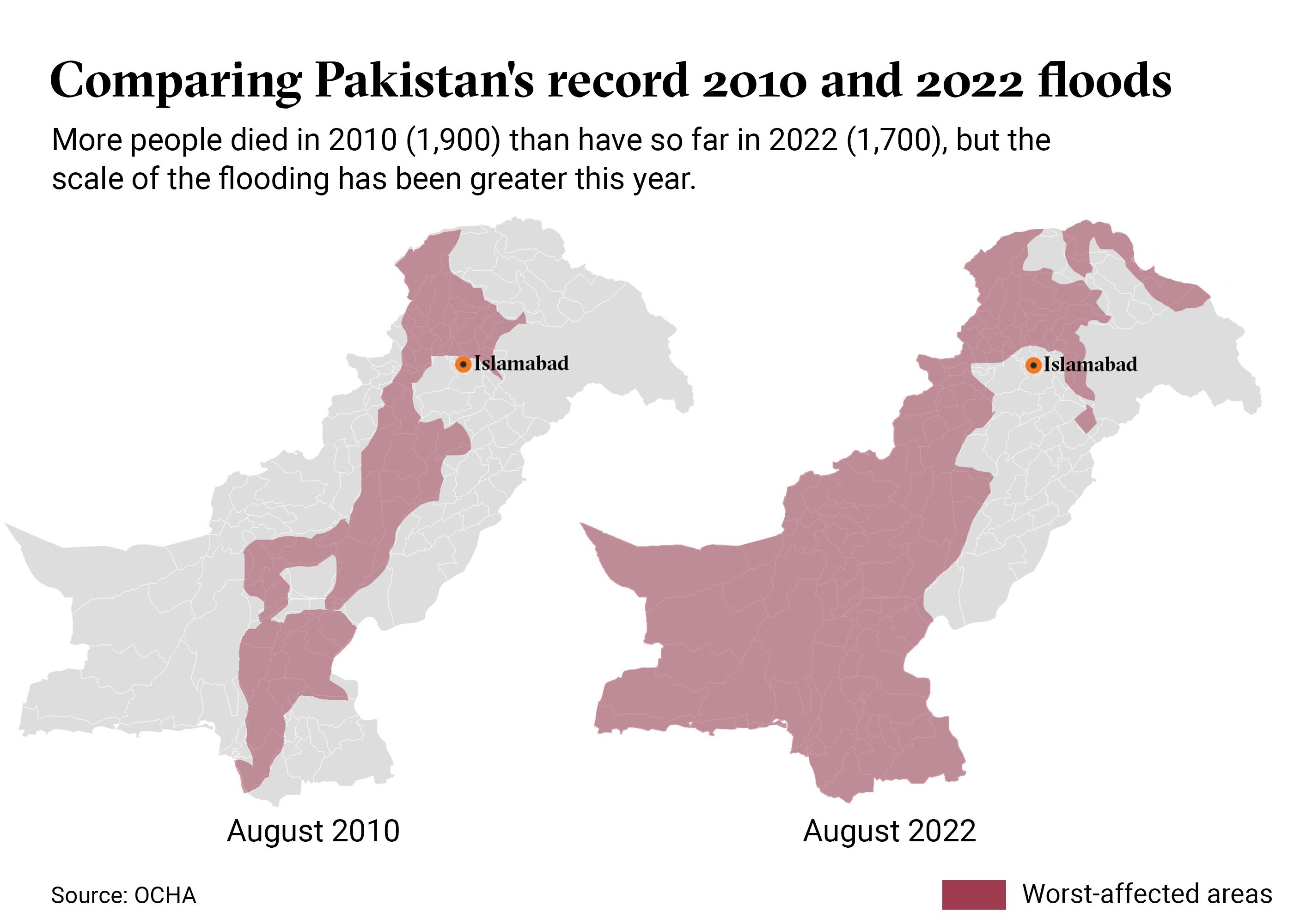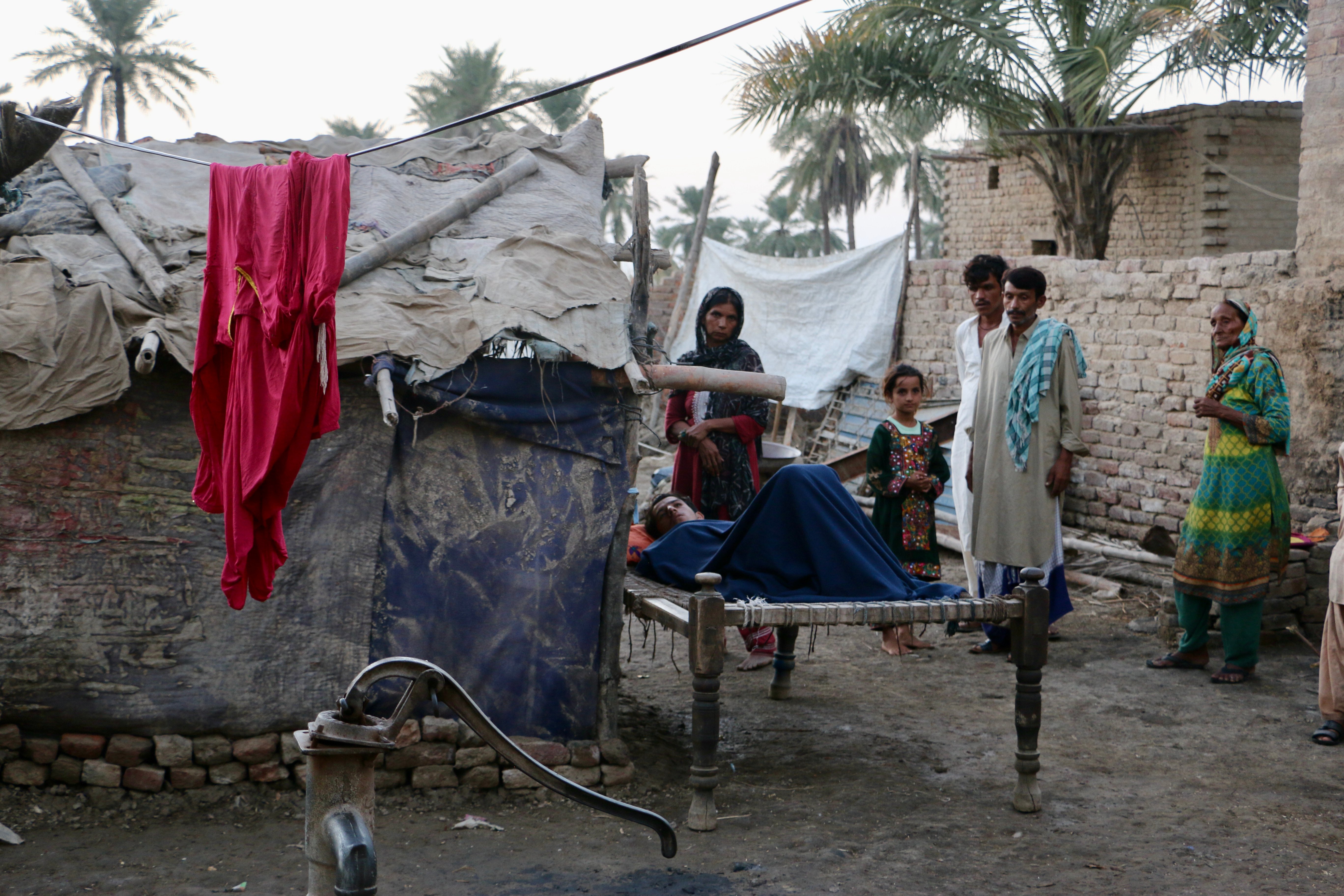As world leaders address COP27 in Egypt to try to reinvigorate stalled global climate talks, survivors of Pakistan’s heaviest flooding in living memory are facing a health crisis, with stagnating floodwaters fuelling a rise in malaria, dengue, and diarrhoea.
The unprecedented scale of the disaster – $30-40 billion in economic damage, 1,700 killed since mid-June, eight million displaced, and almost half the country’s farmland submerged – turbo-charged pre-summit calls for climate reparations. But there are far more pressing concerns in southern Sindh province, where access to assistance has been curtailed by the vast extent of the flooding, massive damage to health facilities, and a chronic lack of medical personnel.
Read more → Pakistan floods pose urgent questions over preparedness and climate reparations
When The New Humanitarian visited last month, the rains had stopped and some survivors were returning to rebuild their homes. But two months after the peak of the flooding, much of the water still hadn’t receded, with many villages still islands that could only be reached by boat. Because of waterborne diseases, this is more than just a transport problem.
Once she finally made her way through the people crowding the office of the paediatrician at the district hospital in Dadu, Shabana carefully laid her baby girl down on a desk covered with medical reports. It didn’t take the doctor more than a couple of minutes to figure out what baby Lareb was suffering from: yet another case of malaria.
“We got away from the floods, but now we are caught by disease,” the 25-year-old mother told The New Humanitarian. All of Shabana’s six children were sick with fever or diarrhoea, and she was also not feeling well.
The water has become an extraordinary breeding ground for mosquitoes spreading dengue and malaria. Families must bathe in the brownish sludge, leading to skin ailments, and often they have no choice but to drink it, causing diarrhoea.

“Eighty percent of the people I am seeing are sick,” said Sorath Sindhu, a doctor in Sindh’s second largest city of Hyderabad who spends her one free day a week volunteering in areas affected by the flood. “They either have malaria or a skin disease – or they come with both,” she said.
Health officials fear this secondary crisis might become deadlier than the original disaster. "The risk of a cholera outbreak, malaria, and dengue fever threaten to claim far more lives than the floods," UN Secretary-General António Guterres warned recently.
At the hospital in Dadu, the paediatrician decided to admit baby Lareb. The risk the disease might attack the child’s brain was too high. Given the high patient load, she was likely to have to share a bed with two other children.

Outside the office, an armed police guard had been posted to ensure that distressed parents didn’t crowd the doctor’s treatment room. The paediatrician said he was dealing with five times as many patients than before the floods.
“This is a bigger disaster for us than COVID was,” said hospital director Abdul Kareem Meerani.
The hospital treated around 100 patients for malaria in September 2021. This year, that monthly figure was 30 times higher: 3,000.
Only the most urgent cases can stay for more than one day. “If patients occupy a bed for longer than 24 hours, how can we manage?” Meerani asked.
Poverty and malnutrition
Baby Lareb was one of the lucky ones. Her parents managed to scrape together enough to hire a motorbike to take her to the hospital.
“We could hardly afford to come here,” said Shabana, whose family are day labourers.
They had to pay 200 rupees, less than $1, which represents a significant sum for anyone living from hand to mouth, like most of Pakistan’s flood victims.
In 2018, more than one in five of Pakistan’s 220 million people were already living below the poverty line, according to the Asian Development Bank. More recent official figures aren’t available, but the combined effects of COVID and inflation are likely to have driven that figure higher; and the World Bank has predicted that the flood disaster could push between 6 and 9 million more people into poverty.
In addition to the destruction of much of Pakistan’s farmland in the floods, wheat imports from Ukraine have become more or less impossible since the war. The number of people facing hunger has almost doubled since the floods, according to Save the Children.
Read more → How Russia’s invasion of Ukraine will worsen global hunger
Among the biggest health concerns is malnutrition. Even before the floods, more than 40% of Pakistani mothers already suffered from anaemia, and the country has one of the world’s highest maternal mortality rates. At the newborn intensive care unit at Dadu hospital, they have seen a surge in malnourished babies.
When The New Humanitarian visited, little Sorath was only nine days old. Her rib cage, clearly visible through her frail skin, rose and fell inside the transparent walls of an incubator. The smallest diaper available hung loosely from her tiny body. She weighed just 1.5 kilograms.
“Describe this well, so we get help from the government.”
“We ran out of food,” explained Arbali Laghri, the baby’s grandmother, who was standing watch by her side. “Her mother didn’t get enough to eat.”
Before the flood, they could at least afford potatoes and lentils. Now, those vegetables aren’t reaching the village anymore because of damaged roads. And even if they did, the family of day labourers wouldn’t be able to afford them: They haven’t had any work since the floods.
“Describe this well, so we get help from the government,” Laghri told The New Humanitarian.
Scant support
Last month, as the risks of the secondary health crisis became clearer, the UN raised its ask to $816 million in international aid – more than five times its previous assessment – though it has warned that this figure still falls far short of what will be needed.
Grievances with the government run deep within flood-affected communities. Many survivors told The New Humanitarian they hadn’t seen enough assistance being provided, but they also spoke of seeing little-to-no support from aid organisations.
While Pakistan’s government had been restrictive towards foreign organisations since the 2011 killing of Osama bin Laden (after a fake vaccination drive), they have offered international NGOs blanket access to flood-affected areas without cumbersome applications, although groups weren’t sure how long this would last.
“I feel so much pain that I couldn't save my child.”
The NGOs, meanwhile, are struggling to cover the vast area. The New Humanitarian visited nine different villages and towns in three different districts over the course of five days and only encountered aid workers in one place: a displacement camp outside Dadu.
For people like Arfa Landhar – who fled her home in Qumicharo after it was washed away by floodwaters in early September – the lack of aid has proven deadly.

Shortly after arriving at a displacement camp, Landhar gave birth. Her son was “light as a piece of cotton”, she said. After six days, when the hospital had sent them away without providing treatment, the newborn stopped breathing.
“I feel so much pain that I couldn't save my child,” she said.
Landhar blames the death of her son on the rains and the flooding. “I had to run around too much. I needed to protect my home,” she said, rocking her one-year-old, who was sick with a cold.
She is now living in one of the hundreds of stuffy dark tents on a dusty plot of land on the outskirts of Dadu. All there is inside is a bed frame made of wood and rope. She couldn’t bring more than a bundle of clothes for her family.
Coughing and sneezing was already common in the camps by late October. Temperatures in the rural south drop significantly during winter months. Aid groups have now started distributing blankets as the cold season sets in.

Aside from physical health problems, there are emotional burdens too. Landhar’s neighbour almost drowned in the strong current when trying to get a boat to save his family from the floodwaters. His wife weeps every time she recalls the episode.
Many affected by the floods remain worried that the water might come back and hunt them down again, while others don’t feel safe inside their houses any more, having seen them crumble under the intensity of the monsoon downpours.
While Egypt’s resort town of Sharm el-Sheikh is a world away from flood survivors in rural Sindh, what’s agreed in its COP27 summit rooms has a real impact for the future of communities like this, where climate-linked disasters are increasingly commonplace.
But most here feared the recovery from this disaster wouldn’t even be accomplished by the time the next flooding hits. “We should all hold hands and address the issue of climate change,” Azra Fazal Pechuho, Sindh’s health minister, told The New Humanitarian. “This calamity can haunt us every year now.”
With reporting support from Veengas, a local reporter who only goes by one name. Edited by Abby Seiff.





